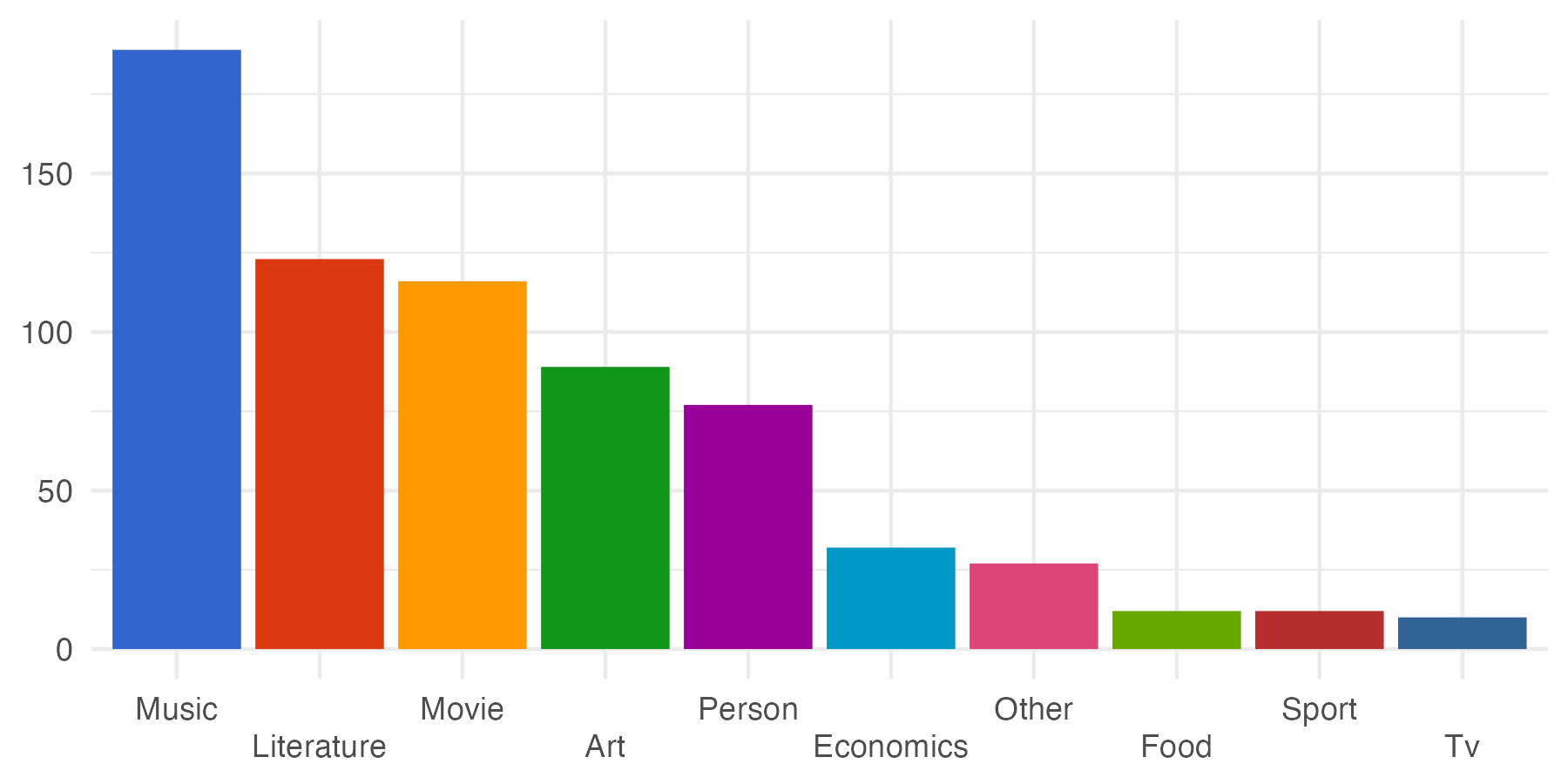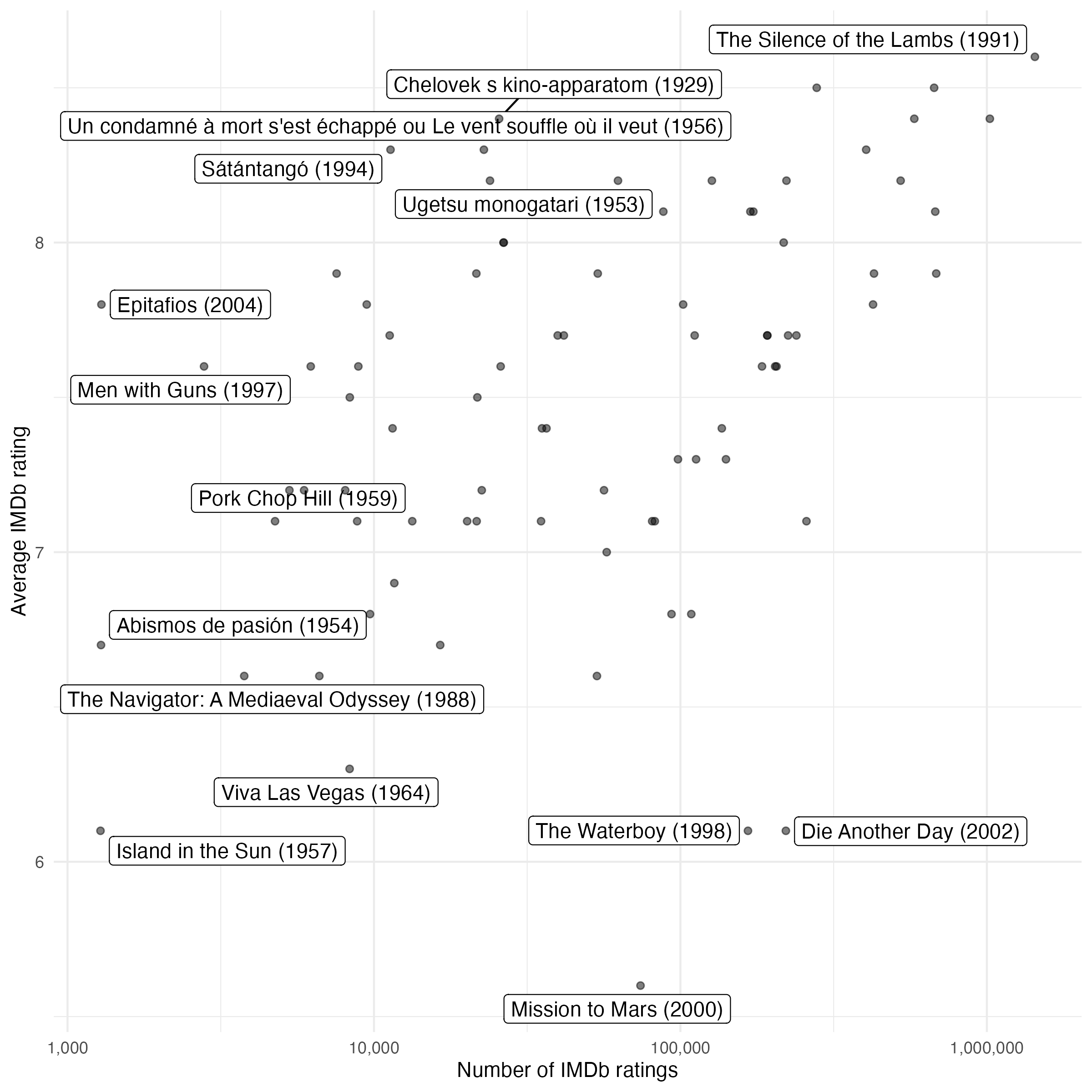I am currently going through all posts on Marginal Revolution. It is one of the most popular economics blogs and home to a lot of great content. For example, in a series of posts over the years, Tyler Cowen listed his favourite things related to different locations in the world.
As I always appreciate good recommendations (especially related to culture from different countries), I decided to create a small dataset with the key recommendations related to each location. This is easier said than done as you will find a lot of nuances in the individual posts, often including multiple recommendations and considerations related to each category (and thoughts on what to avoid). In addition, as for most things, it is often not the recommendation in and by itself that is of interest, but the underlying reasoning or method used to reach the specific recommendation.
For my dataset, I decided to pick only one recommendation per category in each post, and if multiple recommendations were made within a category (e.g., favourite movie), I picked the first one. This is by no means doing the individual posts any justice, but it enables a general overview of the types of recommendations, locations, etc. If you would like to read more about the specific recommendations and locations, I highly recommend reading the individual posts.
Let us first look at the various locations. In the figure below, I show the locations covered in the different posts. In the posts, you will find recommendations related to countries, U.S. states, cities, regions, and islands. There is also a post about Mars, but this is (for obvious reasons) not shown in the map below.

The countries of interest are Pakistan, Azerbaijan, Ukraine, Poland, Ireland, Nigeria, Belgium, Serbia, Croatia, Sri Lanka, Scotland (#1, #2), Iceland, Guatemala, Israel, Korea, Romania, Hungary, South Africa, Egypt, Turkey, Grenada, Nicaragua, Portugal, Chile, Japan (#1, #2), Spain, Honduras, Norway, Denmark, Tanzania, Indonesia, Italy, Colombia, Brazil (#1, #2), Austria, Netherlands, Argentina, New Zealand, Australia, Peru, France, India, Mexico, China, and Switzerland.
The U.S. states of interest are Idaho (#1, #2), New Hampshire, Delaware, North Dakota, Nebraska, Iowa, Kentucky (#1, #2), Minnesota (#1, #2), Oklahoma, New Mexico, South Carolina, Florida (#1, #2), Alabama, Nevada (#1, #2), Missouri, Alaska, Ohio, Utah, Arizona, Georgia (#1, #2), Maine, Vermont, Pennsylvania, Colorado, Connecticut, New Jersey, Indiana, Louisiana, Virginia, North Carolina, Rhode Island, Tennessee, and Texas.
For the cities, we have Venice (#1, #2), Baltimore, Berlin, London, and New York City. For the islands, we have Java, Sicily, and Puerto Rico, Last, for the regions, we have Catalonia and Quebec.
Noteworthy, it was not possible to include recommendations from all posts. For Austria, for example, you have several posts related to different categories (e.g., writers, Franz Josef Haydn, Wolfgang Amadeus Mozart, and Gustav Mahler). Similarly, for Germany, there is also a separate post on J.S. Bach. Last, you also find a few posts, i.e., for Bolivia and Sweden, where you do not have specific categories.
With all the data, I coded each entry as related to either music, literature, movie, art, person, economics, food, sport, tv, or other. These categories are not perfect, and there is an overlap between some of them (literature, for example, can also be art), and some categories capture a lot (for example, I placed a few operas within the music category). That being said, the categories provide an overview of the type of recommendations we find in the posts. You will find the distribution of the categories in the figure below.

We see that most entries are related to music, literature, and movies. I was expecting more food recommendations before I started coding the data, but I guess it is also interesting to see what we do not see covered in the posts. Also, do keep in mind that in particular the ‘Person’ category contains a lot of different recommendations, so do check out the table at the bottom of the post and the individual posts.
For all movies in the data, I also collected data on the average IMDb rating as well as the number of ratings on IMDb. I am not sure this will allow us to say anything meaningful about underrated (or overrated) movies, but I am interested in exploring the movies with a high average rating that are not widely known (i.e., not a lot of user ratings). In the figure below, I show all the movies (with the number of ratings on the x-axis and the average IMDb rating on the y-axis).

Again, I am interested in movies with a high average rating and a (relatively) low number of ratings (observations in the upper-left part of the figure). Here we find movies such as Chelovek s kino-apparatom (1929), Sátántangó (1994), Un condamné à mort s’est échappé ou Le vent souffle où il veut (1956), and Ugetsu monogatari (1953). I have watched a few of them, but I do still need to watch a movie like Sátántangó (the fact that it is more than 7 hours long is making me a bit hesitant).
The movie with the highest average IMDb rating is The Silence of the Lambs (1991), but this movie should be known by most people by now. Among the movies with a lot of ratings but a low average rating are The Waterboy (1998), Die Another Day (2002), and Mission to Mars (2000). Alas, I cannot personally recommend any of the three.
If you are looking for specific recommendations related to a location shown in the map above, check out the table below. However, do keep in mind that a lot (that is, most) of the posts were posted many years ago. And if you find something of interest, do check out the relevant posts (all links are available above).